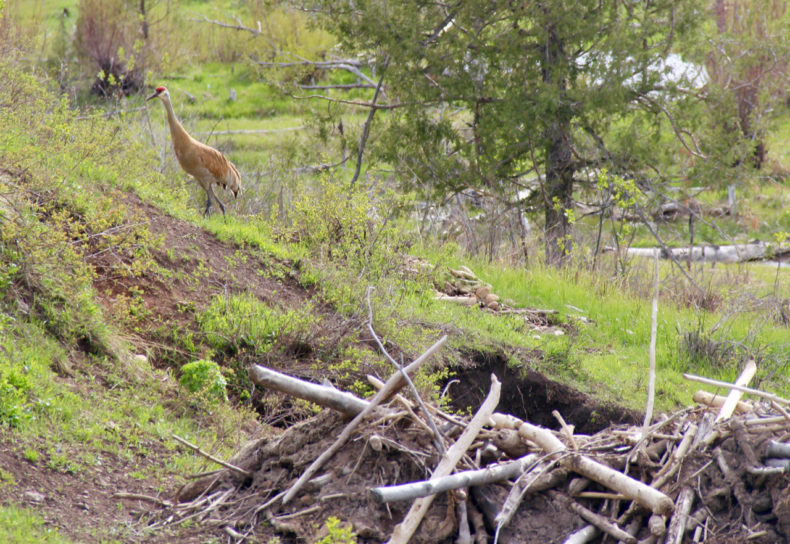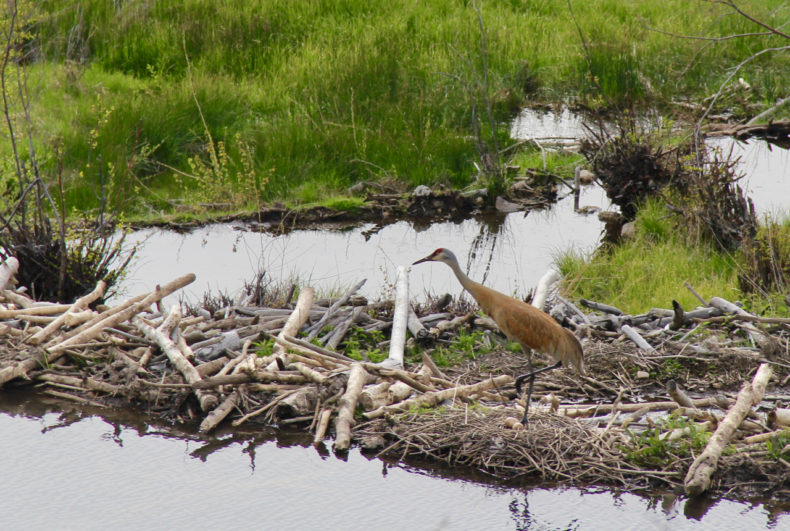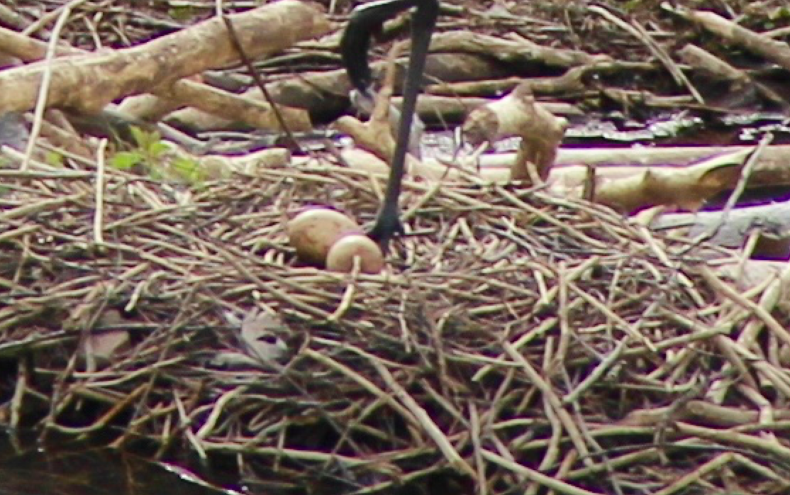Last month I had occasion to spend a couple of days poking around beaver ponds with Joe Wheaton, a castorologist at Utah State University. Joe is a visionary thinker and a profound observer of aquatic ecosystems, and I learn something new whenever I hang out with him. My latest trip to Utah didn’t disappoint, and if you’re at all interested in beaver ingenuity and architecture, I recommend this Twitter thread, in which I attempt to collate some of Joe’s insights and display highlights from our photo safari.
One afternoon, as we hiked up a creek stair-stepped with massive beaver-built terraces, we came upon an especially astonishing sight: a sandhill crane picking her way across the rim of a beaver dam. There are few North American animals that I haven’t seen nosing around a beaver pond, but a sandhill was a new one for me, and for Joe, too. We watched in amazement as the crane wandered behind the lodge and ventured up an aspen-studded slope, hollering that eerie sandhill trill/bugle all the while, the saurian call that Aldo Leopold described as “the trumpet in the orchestra of evolution.” We were baffled — was she lost? What was she trying to communicate? Why had she flown into these mountains, and why was she marching ever higher into the aspens? Another beaver-pond mystery, in a world full of ‘em.

A week later I tweeted some photos from our hike, including one of the crane, and everything became clear. A sharp-eyed biologist/cyclist named James Gilbert pointed out something extraordinary about this photo — well, even more extraordinary than a crane tightroping along a beaver dam — that I’d missed. Can you spot it? I’ll give you a moment to ponder the following picture:

***
****
Have you seen it yet?
********
**********************
********************************************

Yep — it’s a nest, and a clutch of two eggs!
Suddenly, the crane’s odd antics made perfect sense: She’d been trying to lure us away from her nest, a shrewd strategy I’d been too dense to appreciate. Fortunately, we’d cleared out pretty quick, so the disturbance was hopefully minimal. And the sandhill was probably accustomed to intruders, anyway — what’s a beaver dam, after all, but a wetland superhighway?
At this point I’ve been reading, writing, and thinking about beavers for just about a decade, yet these animals, and the landscapes they engineer, continue to astound me. There’s always a new biotic connection to observe, a new stitch in the ecological web to tug at. A few years ago, at a beaver compound in Vermont with the biologist Skip Lisle, we noticed that the rodents’ relentless logging had opened the forest canopy, which in turn allowed jewelweed to bloom in the wetland, which in turn attracted dozens of hummingbirds to feed. I’ve never seen a peer-reviewed study linking beavers and hummingbirds, but, in the field, their relationship was unmistakable. Add sandhill cranes to the near-endless list of beneficiaries.